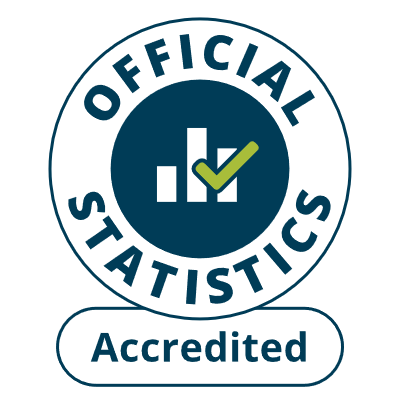
 Ethnicity by area and ethnic group
Ethnicity by area and ethnic group
None
|
||||||||||||||||||||||||||||||||||||||||||||||||||||||||||||||||||||||||||||||||||||||||||||||||||||||||||||||||||||||||||||||||||||||||||||||||||||||||
Metadata
- High level information
- Summary information
- Keywords
- Weblinks
- Statistical quality information
- Open Data
Title
Local Labour Force Survey/Annual Population Survey: Ethnicity by Welsh local authorityLast update
November 2023Next update
February 2023Publishing organisation
Welsh GovernmentSource 1
Annual Population Survey, Office for National StatisticsContact email
stats.inclusion@gov.walesDesignation
National StatisticsLowest level of geographical disaggregation
Local authoritiesGeographical coverage
WalesLanguages covered
English and WelshData licensing
You may use and re-use this data free of charge in any format or medium, under the terms of the Open Government License - see http://www.nationalarchives.gov.uk/doc/open-government-licenceGeneral description
This dataset provides information on the ethnicity of people by Welsh local authority.Data collection and calculation
These data are taken from the ANNUAL datasets from the Annual Population Survey (APS) for 2005 onwards and the Welsh Local Labour Force Survey (WLLFS) prior to that. These surveys are carried out by the Office for National Statistics (ONS).Nomis is the ONS's official portal for labour market statistics. Note that some estimates from Nomis for the APS may differ slightly from those presented here due to differences in how local authority geographies are constructed.
Frequency of publication
QuarterlyData reference periods
2001 to 2023Rounding applied
Figures are rounded to the nearest 100 and so there may be some apparent slight discrepancies between the sum of constituent items and the totals as shown.Revisions information
In March 2019, the Annual Population Survey data was revised back to 2012, due to taking on board the latest population estimates.September 2019: The percentage of people who are Black, Asian or from other ethnic minority backgrounds was previously calculated as a percentage of all persons - this has now been revised so that it is based only on those who responded to the question. The data for all previous waves have been revised.
Annual Population Survey (APS) responses are weighted to official population projections. The projections for 2020 were 2018-based, and, therefore, were based on demographic trends that pre-dated the COVID-19 pandemic.
To allow for different trends during the pandemic the responses for the APS have been reweighted on the 9 September 2021 to new populations derived using growth rates from HM Revenue and Customs (HMRC) Real Time Information (RTI). The reweighting has been applied from year ending March 2020 data onwards and gives improved estimates of both rates and levels.
ONS identified issues in this new weighting in 2022. Data from the year ending March 2020 to the year ending December 2021 has been revised on 10 November 2022 to incorporate a new weighting correcting these issues.
Revised data is marked with an (r).
Keywords
EthnicityStatistical quality
The data for Wales are based on an enhanced sample compared to earlier years. APS data are collected throughout the year and are published for calendar years. WLLFS data was published for the year ended February, each year i.e. 2001 WLLFS data relates to year ended February 2002. The data do NOT exactly match annual averages derived from the 4 QUARTERLY datasets in each year due to differences in the sampling structure.The survey asks respondents what they consider to be their ethnic origin. This table combines the non-white groups together in order to increase the reliability of the estimates. Non-white includes: mixed, Asian or Asian British, Black or Black British, Chinese and other ethnic group. As the data come from a survey, the results are sample-based estimates and therefore subject to differing degrees of sampling variability, i.e. the true value for any measure lies in a differing range about the estimated value. This range or sampling variability increases as the detail in the data increases, for example local authority data are subject to higher variability than regional data. As the results from the quarterly surveys are combined with, results from additional persons sampled, they provide a more robust (boosted) dataset, with estimates subject to much lower sampling variability than the quarterly LFS.
Annual Population Survey (APS) responses are weighted to official population projections.
The projections for 2020 were 2018-based, and, therefore, were based on demographic trends that pre-dated the COVID-19 pandemic. To allow for different trends during the pandemic the responses for the APS have been reweighted on the 9 September 2021 to new populations derived using growth rates from HM Revenue and Customs (HMRC) Real Time Information (RTI). The reweighting has been applied from year ending March 2020 data onwards and gives improved estimates of both rates and levels. The changes ONS have made to the weighting should reduce the bias of estimates at high levels of aggregation. Some smaller breakdowns may be impacted negatively and more extreme changes could be seen given the reduced size of the underlying sample since the start of the pandemic.
ONS identified issues in this new weighting in 2022. Data from the year ending March 2020 to the year ending December 2021 has been revised on 10 November 2022 to incorporate a new weighting correcting these issues.
Note: Data for 2011 Q1-3 removed due to change in questions resulting in discontinuity in the series.








